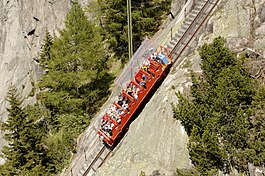AK 르포리스
AK Leporis| 관측 데이터 에폭 J2000 이쿼녹스 J2000 | |
|---|---|
| 별자리 | 레푸스 |
| 우측 상승 | 05h 44m 26.543s[2] |
| 탈위임 | −22° 25′ 18.77″[2] |
| 겉보기 크기(V) | 6.141[3] |
| 특성. | |
| 스펙트럼형 | K2V[4] |
| U-B색지수 | +0.74[5] |
| B-V색지수 | +0.96[5] |
| 변수형 | BY 드라코니스[4] |
| 아스트로메트리 | |
| 방사 속도(Rv) | -9.57 ± 0.13km[6]/s |
| 적정운동(μ) | RA: −304.4[7]mas/yr Dec.: −352.2[7]mas/yr |
| 시차(시차) | 112.0 마스[8] |
| 거리 | 리 28리 (9.0[9]pc) |
| 절대치수(MV) | 6.31[3] |
| 세부 사항 | |
| 표면 중력(log g) | 4.66 ± 0.01[10] cgs |
| 온도 | 4,869 ± 61[10] K |
| 금속성 [Fe/H] | 0.01 ± 0.06[10] 덱스 |
| 회전 속도(v sin i) | 2.8 ± 1.8[6] km/s |
| 나이 | 0.9[9] Gyr |
| 기타 지정 | |
| 데이터베이스 참조 | |
| 심바드 | 자료 |
AK 르포리스(AK Leporis)는 토끼자리인 레푸스의 남쪽 별자리에 있는 별이다.겉보기에는 6.141의 시각적 크기를 가지고 있어,[3] 보틀 저울에 따르면 밤에 시골 하늘에서 희미하게 보인다.이 별은 감마 르포리스와 시각적 쌍을 이루고 있다. 두 별은 97˚의 각이 분리되어 있어 최상의 조건에서도 육안으로 분리하기 어렵다.[12]감마 르포리스와 AK 르포리스 모두 우르사 메이저 무빙 그룹의 일원으로 우주를 통한 공통 운동을 공유하고 있다.[6]
이것은 별의 활동으로 인해 밝기 변동을 겪는 BY 드라코니스 변광성이다.차등 회전은 활동 위도에 따라 변동의 주기성에 변화를 일으킨다.[4]AK 르포리스에서 X선 방출이 검출되었으며, 전파원 또는 근처에 위치한다.[8]
이 별의 적외선 관측 결과 24 µm의 파장에서 큰 초과가 나타난다.이것은 시선에 가까운 감마 르포리스에 의해 설명될 수도 있고, 적색 왜소 동반자나 먼지 디스크가 있을 수도 있다.70 µm에서 초과 관측된 것은 없다.[9]
참조
- ^ a b Nitschelm, C.; des Etangs, A. Lecavelier; Vidal-Madjar, A.; Ferlet, R.; Olsen, E. H.; Dennefeld, M. (August 2000). "A three-year Strömgren photometric survey of suspected β Pictoris-like stars". Astronomy and Astrophysics Supplement Series. 145: 275–281. doi:10.1051/aas:2000243. Retrieved 19 January 2022.
- ^ a b Roeser, S.; Bastian, U. (September 1988), "A new star catalogue of SAO type", Astronomy and Astrophysics Supplement Series, 74 (3): 449–451, Bibcode:1988A&AS...74..449R.
- ^ a b c Nordström, Andersen; et al. (2004), "The Geneva-Copenhagen survey of the Solar neighbourhood. Ages, metallicities, and kinematic properties of ~14000 F and G dwarfs", Publications of the Astronomical Society of Australia, 21 (2): 129–133, Bibcode:2004PASA...21..129N, doi:10.1071/AS04013.
- ^ a b c Lecavelier Des Etangs, A.; et al. (August 2005), "A photometric survey of stars with circumstellar material", Astronomy and Astrophysics, 439 (2): 571–574, Bibcode:2005A&A...439..571L, doi:10.1051/0004-6361:20042401.
- ^ a b Mermilliod, J.-C. (1986), "Compilation of Eggen's UBV data, transformed to UBV (unpublished)", Catalogue of Eggen's UBV Data, SIMBAD, Bibcode:1986EgUBV........0M.
- ^ a b c Biazzo, K.; et al. (December 2012), "Elemental abundances of low-mass stars in nearby young associations: AB Doradus, Carina Near and Ursa Major", Monthly Notices of the Royal Astronomical Society, 427 (4): 2905–2916, arXiv:1209.2591, Bibcode:2012MNRAS.427.2905B, doi:10.1111/j.1365-2966.2012.22132.x, S2CID 118617986.
- ^ a b Høg, E.; et al. (March 2000), "The Tycho-2 catalogue of the 2.5 million brightest stars", Astronomy and Astrophysics, 355: L27–L30, Bibcode:2000A&A...355L..27H, doi:10.1888/0333750888/2862.
- ^ a b Lazio, T. Joseph W.; et al. (January 2010), "A Blind Search for Magnetospheric Emissions from Planetary Companions to Nearby Solar-Type Stars", The Astronomical Journal, 139 (1): 96–101, arXiv:0910.3938, Bibcode:2010AJ....139...96L, doi:10.1088/0004-6256/139/1/96, S2CID 118537554.
- ^ a b c Lawler, S. M.; et al. (November 2009), "Explorations Beyond the Snow Line: Spitzer/IRS Spectra of Debris Disks Around Solar-type Stars", The Astrophysical Journal, 705 (1): 89–111, arXiv:0909.0058, Bibcode:2009ApJ...705...89L, doi:10.1088/0004-637X/705/1/89, S2CID 1272803.
- ^ a b c Prugniel, Ph.; et al. (July 2011), "The atmospheric parameters and spectral interpolator for the MILES stars", Astronomy & Astrophysics, 531: A165, arXiv:1104.4952, Bibcode:2011A&A...531A.165P, doi:10.1051/0004-6361/201116769, S2CID 54940439.
- ^ "V* AK Lep". SIMBAD. Centre de données astronomiques de Strasbourg. Retrieved 2015-04-02.
{{cite web}}: CS1 maint : 포스트스크립트(링크) - ^ Kaler, James B., "Gamma Leporis", Stars, University of Illinois, retrieved 2015-04-02.



